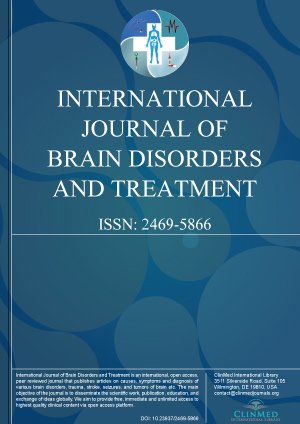Early Online
Open Access DOI:10.23937/2469-5866/1410048
Cystic Vestibular Schwannomas: Clinical and Therapeutic Particularities
Lotfi Boublata, Oumaima Bouzerara, Imene Lekikot, Ahlem Laouar, Belkacem Boudjaja and Soumeya Amarouche
Article Type: Original Article | First Published: 2024/02/19
Article Formats
- Full Article
- XML
- EPub Reader
Open Access DOI:10.23937/2469-5866/1410047
How Necessary is Duraplasty in the Treatment of Chiari Malformation?
Mahmut CAMLAR, Mustafa Eren YUNCU, Ali KARADAG, Merve OREN, Caglar TURK, Ozgur OZTEKİN and Fusun OZER
Article Type: Original Research | First Published: 2024/02/08
Article Formats
- Full Article
- XML
- EPub Reader
Open Access DOI:10.23937/2469-5866/1410046
Mary Jo Kurth, Joanne Watt, Paul Innocenzi, Laura Mooney, John V. Lamont, Peter Fitzgerald and Mark W Ruddock
Article Type: Research Article | First Published: 2024/01/11
Article Formats
- Full Article
Open Access DOI:10.23937/2469-5866/1410043
Sergio Altomare, Maria Stella Aniello, Ruggiero Leone and Maurizio Giorelli
Article Type: Case Report | First Published: June 30, 2022
Article Formats
- Full Article
Open Access DOI:10.23937/2469-5866/1410042
Ruggiero Leone, Sergio Altomare, Maria Stella Aniello, Daniele Liuzzi, Immacolata Plasmati, Michele Sardaro, Maria Superbo, Daniela Tato, Rosella Carpentiere, Giuseppe Guglielmi and Maurizio Giorelli
Article Type: Case Report | First Published: June 20, 2022
Article Formats
- Full Article
- XML
- EPub Reader
Open Access DOI:10.23937/2469-5866/1410041
Manfred Fähnle
Article Type: Review Article | First Published: January 08, 2022
Article Formats
- Full Article
- XML
- EPub Reader

Volume 8
Issue 1
Issue 1
